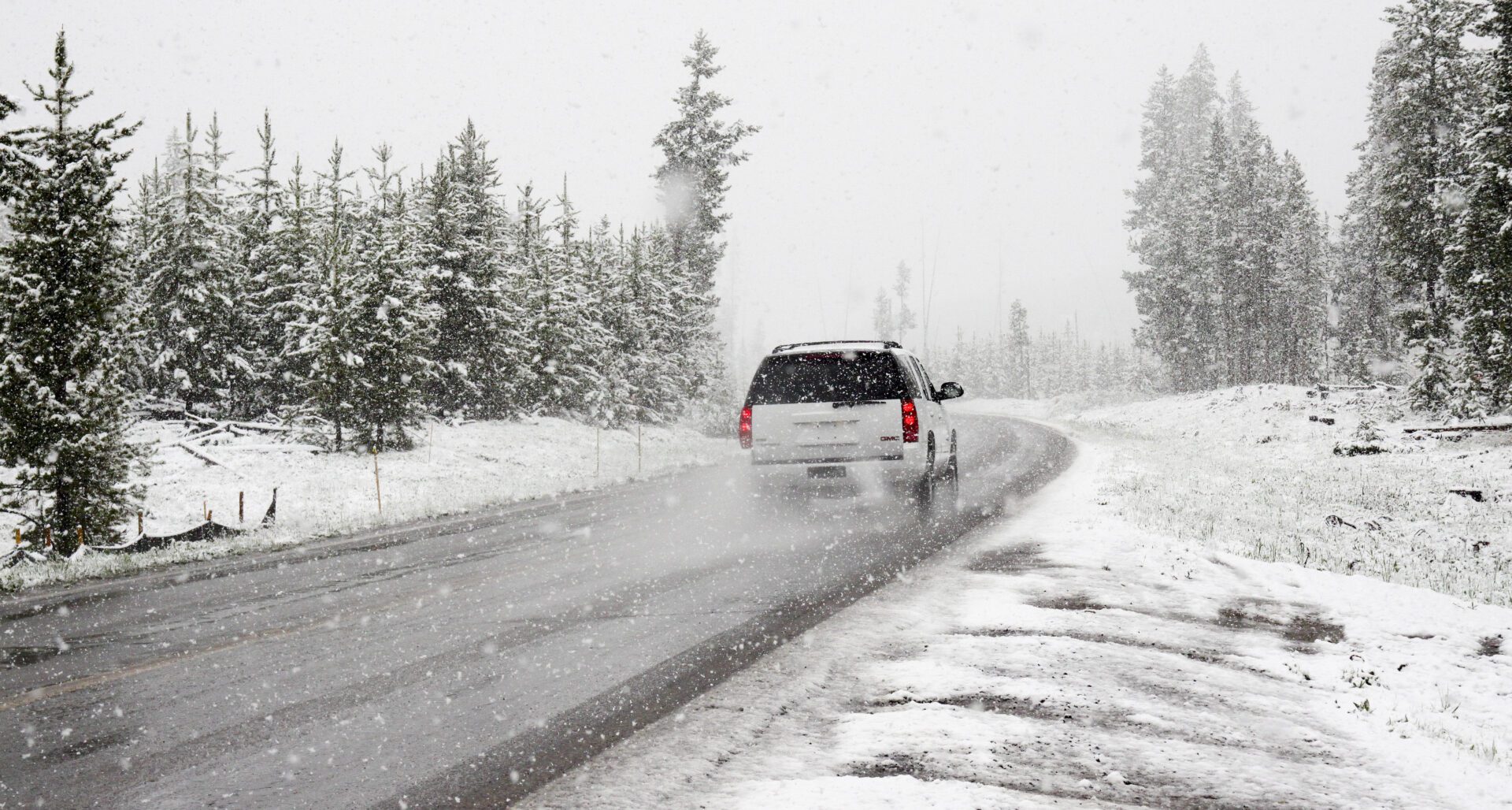The National Safety Council reports that fatal car accidents are “14 percent more likely to occur on the first snowy day of the season.” This is because drivers need to re-acclimate themselves to winter driving from the year before. But making it past the first snowy day does not truly mean your risk of an accident has decreased. Exercising proper caution throughout the winter months is important.
To avoid a dangerous situation, exercise great caution when navigating roads in wintry conditions.
- When roads are slick, be sure to reduce your speed accordingly; the posted speed limit may be entirely too fast during a snowstorm.
- Be sure to increase the distance between your car and the car in front of you, as icy roads can compromise your vehicle’s ability to stop.
- Obey all traffic signs and utilize turn signals. After all, other drivers are facing the same dangerous conditions.
Is Your Car Prepared for Winter Weather?
To begin preparing for winter driving, you should assess your car or truck to make sure your vehicle is ready to meet the elements.
Winter Weather Car Checklist
- Your windshield wipers are in good shape and are functioning correctly. Visibility is essential when driving in the snow.
- Your tires are in good shape and have air in them. Your tires lose air faster in cold weather.
- You have anti-freeze, oil, and power steering fluid.
- You visit a mechanic to have your brakes, hoses, and belts checked.
In case of an emergency, prepare your car with the following items: - A shovel to dig your car out if and when it gets stuck in the snow.
- A set of jumper cables. Car batteries tend to lose power faster in cold weather.
- Keep warm clothes in the car. In the event that you are stranded and waiting for assistance, your clothes may get wet from the surrounding snow, which makes a spare sweater, hat, gloves, and a blanket essential for staving off frostbite, hypothermia, or other ailments.
- An ice scraper and snow brush to help optimize visibility.
- A first aid kit in case of an injury.
What to do if Your Car Skids on Ice
Skidding is the bane of drivers on icy roads. The best way to remedy skidding is to prevent it. Do not speed, and increase the normal distance between you and the vehicle in front of you. You must be extra cautious on slippery roads.
However, if you ever find your car skidding on ice you should:
- Take your foot off the gas
- Do not pound on the brakes instead tap the brakes lightly and frequently
- Steer in the direction of which you are skidding; this will help you gain a bit of control
How to Drive on Icy Roads
Drivers must adopt a unique approach to driving when the roads are icy. A good rule of 
Pressing the brakes too hard can result in skidding. If your wheels lock up, gently apply the brakes, never slam on them. Also, know if you have anti-lock brakes on your car and read your owner’s manual about how to utilize anti-lock brakes. Generally, you will not want to “pump” your brakes if you have anti-lock brakes.
Turn your headlights on, even during the day. And keep your headlights and taillights clean by using a snow brush or ice scraper.
How to Get a Car Unstuck from the Snow
- Avoid pressing the accelerator too much as this can cause your car to sink deeper into the snow.
- Turn your steering wheel to the left and right a few times to clear some of the snow from around your tires.
- Keep a shovel in your trunk or backseat so you can dig your car out.
- Once you’ve done all of this, then gently touch the accelerator to ease out of the snow.
Winter Tire Safety Tips
Winter tire safety is an important issue that all drivers should pay attention to. Bald and faulty tires can lead to dangerous driving and devastating accidents. Drivers must know what to check for and how to make sure they are driving on safe tires.
Here is a short winter tire safety checklist to help keep you and your family safe:
- Check your tire pressure every month. Do not forget to check the spare. Many gas stations’ tire-pressure gauges over-report the pressure, so it is better to do your own test with a personal gauge. Do not rely on sight alone. A tire could be under-inflated and not look it. Also, always check your pressure before a long trip.
- Inspect tires regularly for uneven wear, cracks, bits of glass or debris, and other signs of tire damage. Periodically get your tires rotated so that they wear evenly.
- Regularly inspect the tread on your tires. A tire is bald if it has 1/16th of an inch loss of tread depth. Most tires have a built-in treadwear indicators that let you know when it is time to replace the tires. When the indicators are level with the outside of the tread, the tires are bald and need to be replaced.
- Conduct a quarter test instead of a penny test. Traditionally, the test for checking tire tread was to place a penny within the tread. If the top of Lincoln’s head was exposed, then the tread was below 1/16th of an inch and the tires needed to be replaced. A better and safer way to check tire treads is to use a quarter. A quarter will show when a tire is worn to 1/8 of an inch, a more reliable level for tread wear.
- If your tires are more than six years old, even if the number of miles is under the recommended life amount of 60,000- 80,000, consider getting new tires. Rubber can become weaker over time, and older tires are more prone to blowouts which can lead to dangerous accidents.
Also, be sure to know how your specific vehicle handles different road conditions and know it’s limitation. For example, rear-wheel drive vehicles are far less capable than their front and all-wheel counterparts. Should you own such a vehicle, be sure to exercise heightened caution when venturing out into the elements. However, even 4-wheel drive will not always help in icy conditions.
Many, if not most, cars on the market today come equipped with features like anti-lock brakes that can be the last line of defense on an icy winter day. Anti-lock brakes are meant to help a driver stop quickly on slick road surfaces– and even race car drivers don’t have the reflexes that anti-lock braking systems (ABS) have. ABS keeps your wheels from spinning and losing traction while you slow down and brake, which also helps you to steer even in icy conditions. Cars today are equipped to be safer for drivers, but that doesn’t mean that drivers should take their vehicles’ capabilities for granted. It is always important to be a safe driver first.
Most importantly, use common sense. If the roads are in bad shape, the best thing you can do is not drive. Of course, sometimes you don’t have a choice. In that case, be prepared, and be patient. When the weather is poor, a driver’s highest degree of diligence is required.

Stuart A. Carpey, who has been practicing as an attorney since 1987, focuses his practice on complex civil litigation which includes representing injured individuals in a vast array of personal injury cases.
